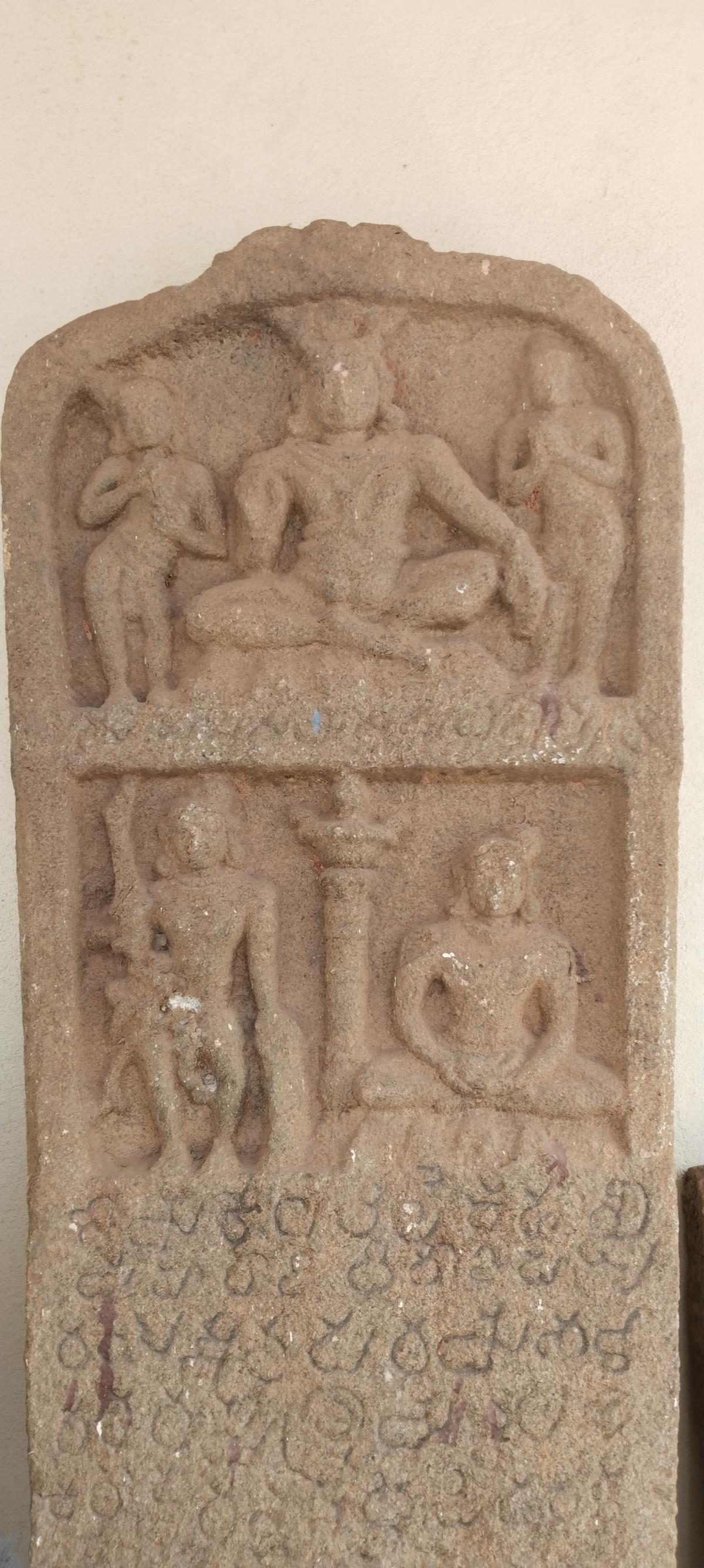Mangaluru | Archaeologist discovers inscription announcing the death of King KulashekaraAlupendra I at Someshwara (The Hindu)

- 20 Oct 2023
Why in the News?
During a recent archaeological exploration at Someshwara near Mangaluru, Karnataka, archaeologists unearthed a rare inscription related to the Alupa dynasty.
About the Someshwara inscription:
- This inscription holds great importance in understanding Tuluva history and culture.
- It features two panels on top, with the first line carved between them.
- The rest of the inscription, inscribed below the panels in Kannada script and the language of 12th century characters, announces Alupendra I's death.
- The human figures depicted in the inscription are KulashekaraAlupendra.
- He is depicted in the first figure standing in Tribhanga (tri-bent stance).
- He is holding a sword in his right hand and a gurani (shield) in his left.
- The King is represented in a sitting posture on a mound to the left of this panel, separated by a pillar, resting both palms on the center of his legs in dhyana mudra.
About the Alupa dynasty:
- The Alupa dynasty, active from the 2nd to the 15th century CE, ruled over Alvakheda Arusasira in the coastal regions of modern Karnataka.
- Initially independent, they later became vassals to powers like the Kadambas, Chalukyas, Rashtrakutas, and Hoysalas due to shifting politics in Southern India.
- They practiced matrilineal inheritance.
- Their descendants, known as the Bunt, continue to follow this system and bear surnames like Shetty, Rai, Hegde, Alva, and Chowta.
- While most are Hindus, some still follow Jainism.
- The last Alupa king, Kulasekharadeva Alupendradeva, is documented through a 1444 CE inscription in Mudabidri's Jain Basadi.
